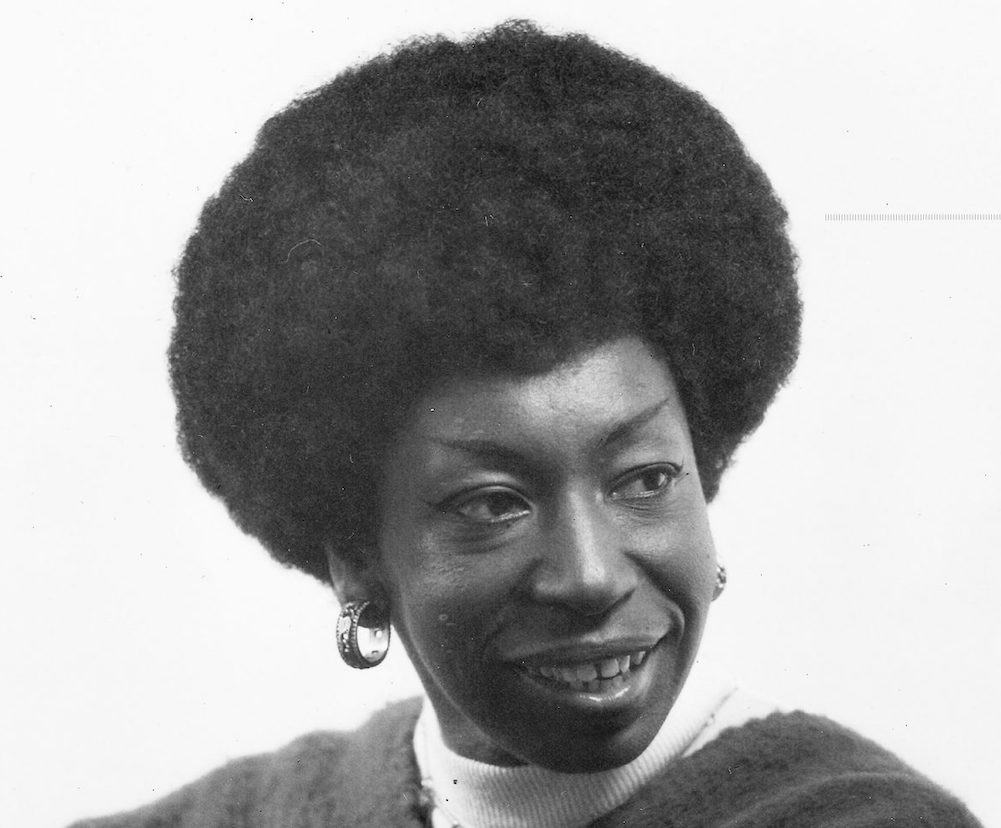Written by: Fayida Jailler
When you were in school, did you learn about global Black figures like Yaksuke of Japan or Jamaica’s Queen Nanny? Honestly, we didn’t either. There are several global Black figures that made their mark in this world, and their stories are only now coming to light.
From Poland to Bangladesh to Japan, London-based blogger Fayida Jailler shines a light of Black history and contributions across the diaspora that too often goes unrecognized. Why? Because Black history is world history!
In case you missed it, she schooled us on 10 Countries You Don’t Associate With Black History, But You Should. Now, she’s exploring the lives of 10 incredible figures from Black history that were not taught to us in school. Let’s get educated.
1. Yasuke - Japan
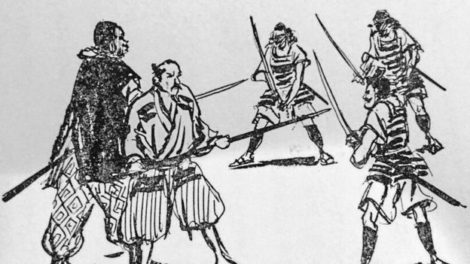
The story of Yasuke, an African Samurai, is so incredible that it sounds like the plot of a Hollywood movie. He was a 16th century African man widely believed to be from Mozambique. He traveled to Japan in 1579 with the Jesuit missionary, Alessandro Valignano. At the time Japan was not the unified nation we recognize today. Japan during the Sengoku Period was marked by civil war and divided into regional strongholds of power. Onc of the most powerful leaders (daimyos) in Japanese history was the esteemed Oda Nobunaga.
The aforementioned Jesuit missionary, Alesandro Valignano, presented Yasuke to the Daimyo Oda Nobunaga, who had reportedly never seen a black person before. Oda Nobunaga couldn’t believe his eyes and was convinced that Yasuke’s skin had been colored with black ink. He commanded Yasuke to strip from the waist up and scrub his skin, but was astonished to see that the pigment didn’t come off. Oda Nobunaga was so impressed by Yasuke’s strength and intelligence that he invited him to join his ranks.
By all accounts Yasuke learned Japanese and adapted well to the Japanese culture. He began to work in Nobunaga’s service where he trained as a Samurai. He received his own house and plot of land as well as a ceremonial Katana sword.
On April 29, Netflix will release a new anime series about Yasuke, featuring the voice of LaKeith Stanfield.
2. Queen Nanny - Jamaica
For those of you who don’t know, Jamaica has seven national heroes of which only one is a woman. Her name is Queen Nanny, or Nanny of the Maroons.
In the 18th century, Queen Nanny was the leader of a community of escaped enslaved Africans in Jamaica called the Windward Maroons. At the time, Jamaica was under British colonial rule, and was at one time considered the ‘crown jewel’ of the British Empire because of the vast wealth amassed for Britain from sugar production on the island.
Known to be an extraordinary military tactician, Queen Nanny outsmarted the British army on numerous occasions, despite them being larger and with superior weaponry. She was also an Obeah woman, who practiced African spirituality and was said to possess supernatural powers.
Over a period of thirty years Queen Nanny is credited with assisting over 1,000 enslaved Africans in Jamaica to escape to freedom. In 1740, conceding defeat, the British forces allocated the ‘Windward Maroons’ 500 acres of land, today known as Moor Town, on condition that the Maroons would not assist the escape of any more enslaved Africans.
3. Maria Remedios Del Valle - Argentina
Although Maria Remedios Del Valle’s story isn’t widely known internationally, she is indirectly honored every year in Argentina, as ‘Afro-Argentine Day’ is celebrated on the anniversary of her death.
But who was Maria Remedios Del Valle and why is her story important?
Known as the ‘Mother of the Homeland’, Maria Remedios del Valle is arguably one of the most famous Afro-Argentines in history. Born in 1766 in Rio de La Plata, Maria participated in the Argentine War of Independence, first as an auxiliary nurse and later as a soldier in combat. In 1813, she was wounded in battle, captured by Spanish colonial forces and imprisoned. During the time she was imprisoned, she suffered horrendous treatment and was repeatedly flogged. Maria escaped and returned to assist Argentine independence soldiers, fighting until the war ended in 1818. Her husband and her two sons were killed, leaving her all alone.
Her legacy was revived in 2013 when a law was passed declaring that November 8th would be celebrated annually as the National Day of Afro-Argentines, to commemorate the death of Maria Remedios Del Valle. The Afro-Argentine population celebrates their history and culture every year on this date.
4. David Fagen - Philippines
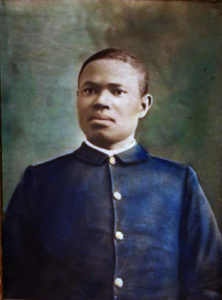
During the Philippine-American War of 1899, the United States deployed thousands of troops in the Philippines, including four regiments of African-American soldiers. In total an estimated 6,000 African-American ‘Buffalo Soldiers’ were believed to have participated in the fighting against the Filipino revolutionary forces.
However, there were mixed feelings about the war among African-Americans, some of whom struggled to justify fighting on behalf of the United States when they themselves were subjected to racial discrimination and Jim Crow laws on their home soil.
As a result, there was a certain amount of desertion among African-American servicemen in the Philippines, none more famous than David Fagen who would go on to be known as the legendary ‘Capitan Insurrecto’. Arriving in the Philippines as a young man in his early 20s, Fagen detested his white commanding officers and was regularly punished. This included having his pay withheld. Eventually, he decided to join the Filipino guerrilla fighters. His training and insider knowledge of US military tactics made him invaluable to the Filipino guerrillas.
His fate remains a mystery.
5. Benkos Bioho - Colombia
The word ‘Palenque’ simply refers to a settlement created by formerly enslaved Africans who have escaped to freedom, and throughout history dozens of palenques were formed across Latin America. The word comes from the Spanish word ‘palo’ meaning stick, as wooden sticks were used to fortify the boundaries of the settlements.
In the main square of San Basilio de Palenque you will find a statue of a man named Benkos Bioho. A member of African royalty, he was born on an island off the coast of mainland Guinea-Bissau in the late 16th century.
Benkos was captured, enslaved and trafficked to Cartagena, but in 1599 he escaped with a small group of enslaved Africans and founded what is today called San Basilio de Palenque. Benkos and his companions formed a sophisticated intelligence network and were able to guide other enslaved Africans to freedom. He was a highly skilled strategist and thwarted multiple attempts by the Spanish authorities to besiege the Palenque. In 2005 San Basilio de Palenque was recognized as a UNESCO cultural heritage site.
6. Zamor - Bangladesh & France
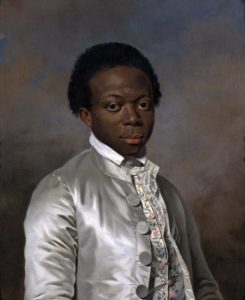
Zamor was born in 1762 in Chittagong in Bengal, which we know today as Bangladesh. Chittagong was formerly a major slave trading port, which accounted for high Sidi (Afro-Indian) presence. In 1773, when Zamor was just eleven years old, he was kidnapped by British slave traders and trafficked to France. He was eventually sold to the French king, Louis XV of France.
In the late 1700s when the French Revolution began, Zamor sided with the revolutionaries who sought to abolish the monarchy. He joined the Jacobins, the most famous of the French political clubs during the revolution. He worked as an informant for the revolutionary forces.
Zamor ran into difficulties when he was subsequently arrested by the Girondins, another political faction active during the French Revolution, who suspected him of being a Jacobin. He went into self-imposed exile for many years, returning in 1815 following the fall of Napoleon. He reportedly purchased a house in Paris and worked as a school teacher. Zamor died in relative poverty in 1820.
7. Hans Jonatan - Denmark/ Iceland
Hans Jonatan was born in 1784 on the Caribbean island of St Croix, which at the time was a Danish colonial territory. To give you some context, during the Trans Atlantic Slave Trade, Denmark was the seventh-largest trading nation and trafficked over 100,000 enslaved Africans.
He was born into slavery in St Croix on the plantation of Constitution Hill, and ‘owned’ by the Schimmelmann family. In 1789, the Schimmelman family moved to Copenhagen, bringing Hans with them.
In 1801, he escaped the Schimmelman household and joined the Danish navy, where he went on to participate in the Battle for Copenhagen. By all accounts he fought bravely and the Danish Crown Prince (later king) Frederick VI honored him with his freedom.
The Schimmelmann family took Hans to court, claiming that as their ‘property’ he should return to work in their service. Sadly in March 1802, the court ruled against Hans. He fled again, this time to Iceland where he remained until death.
In 2018 Icelandic scientists reconstructed part of Hans’ genome using DNA samples from his descendants. It was the first time this had been done without using a person’s own physical remains. Subsequently, almost 1,000 people were identified as living descendants of Hans Jonathan, having inherited his African ancestry.
8. Victoria Santa Cruz - Peru
When we think of the Civil Rights movement, we naturally think of the United States. In actual fact, events in the US inspired similar movements across African diaspora communities worldwide, who took a stand against racial injustice in their own countries.
One of the pioneers of the Civil Rights movement in Peru in the 50s and 60s was Victoria Santa Cruz. She was a poet, choreographer and activist. Victoria was born in 1922 in Lima, one of ten children. Coming from a musical family, she was heavily influenced by Afro-Peruvian folk music and dance, and used the performing arts as a way to explore her own identity as a black, Peruvian woman.
Together Victoria and her younger brother, Nicomedes founded the Afro-Peruvian theater company ‘Cumanana’ in 1958, and in 1966 Victoria founded another group ‘Theater and Dance from Peru’, which focused on preserving and reviving Afro-Peruvian cultural heritage. Victoria was able to use these platforms to showcase Afro-Peruvian talent, not just to a Peruvian audience but internationally. Although Victoria passed away in 2014 at 91, her legacy remains.
She is perhaps best known to contemporary audiences for her 1978 spoken word poem ‘Me Llamaron Negra’ (They Called Me Black), which has over a million hits on YouTube. I definitely recommend checking it out.
9. Mama Tingo - Dominican Republic
Florinda Muñoz Soriano, more widely known as Mamá Tingó, was a Dominican activist and defender of the rural farming community in the Dominican Republic.
She married a fellow farmer in 1951, and together they had a son. She and her husband farmed together on a small plot of land in Hato Viejo. Eventually, after a series of illegal land seizures, Mamá Tingó and other farming families in the region began losing their farmland to a major landowner named Pablo Diaz Hernandez.
Mamá Tingó decided to take action and joined the Federation of Christian Agrarian Leagues, where she organized farmer protests. The Dominican government tried to undermine her efforts, but to no avail. They granted her a court hearing, but on the day of the hearing she was assassinated by one of Pablo Diaz Hernandez’s men.
There was public outrage in the wake of her assassination, and the Dominican government was forced to cede land to over 300 local farmers.
Mamá Tingó continues to be a powerful symbol of resistance, as a Black woman with no formal education, who took a stand against the wealthy elite in the Dominican Republic.
10. Władysław Franciszek Jabłonowski - Poland
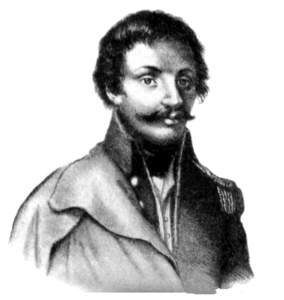
Władysław was born in Gdańsk, Poland in 1769. He was the ‘illegitimate’ son of the aristocrat Maria Dealire and a footman of African descent, about whom very little is known. Maria’s husband, Konstanty Jabłonowski, raised the child as his own, and he went by the nickname ‘Murzynek’ which is a Polish term for a black person.
Władysław Jabłonowski had an illustrious military career: he was known to be an excellent strategist and highly organized.
In 1802 Władysław requested to be sent to Haiti to put down the Haitian Revolution, led by Toussaint Louverture. The Haitian Revolution is significant because the success of the Haitian Revolution in 1804 made Haiti the first nation in Latin America to achieve independence, the first to abolish slavery and the only nation in history established by a slave revolt.
Władysław Jabłonowski however fought against the Haitians, before dying of Yellow Fever in Haiti in 1802.
Interestingly, the Polish legions sent to Haiti to quell the uprising eventually ended up siding with the Haitians whom they identified with because of the oppression they themselves had faced at the hands of the Prussian empire. Therefore, the Polish soldiers fought alongside the Haitians for independence, and established a Polish town in Haiti called Cazale which exists to this day.
11. Learn More from Fayida
If you liked that, then you can find plenty more on her Freedom Is Mine YouTube channel and Instagram page, where she posts daily Black history content.
